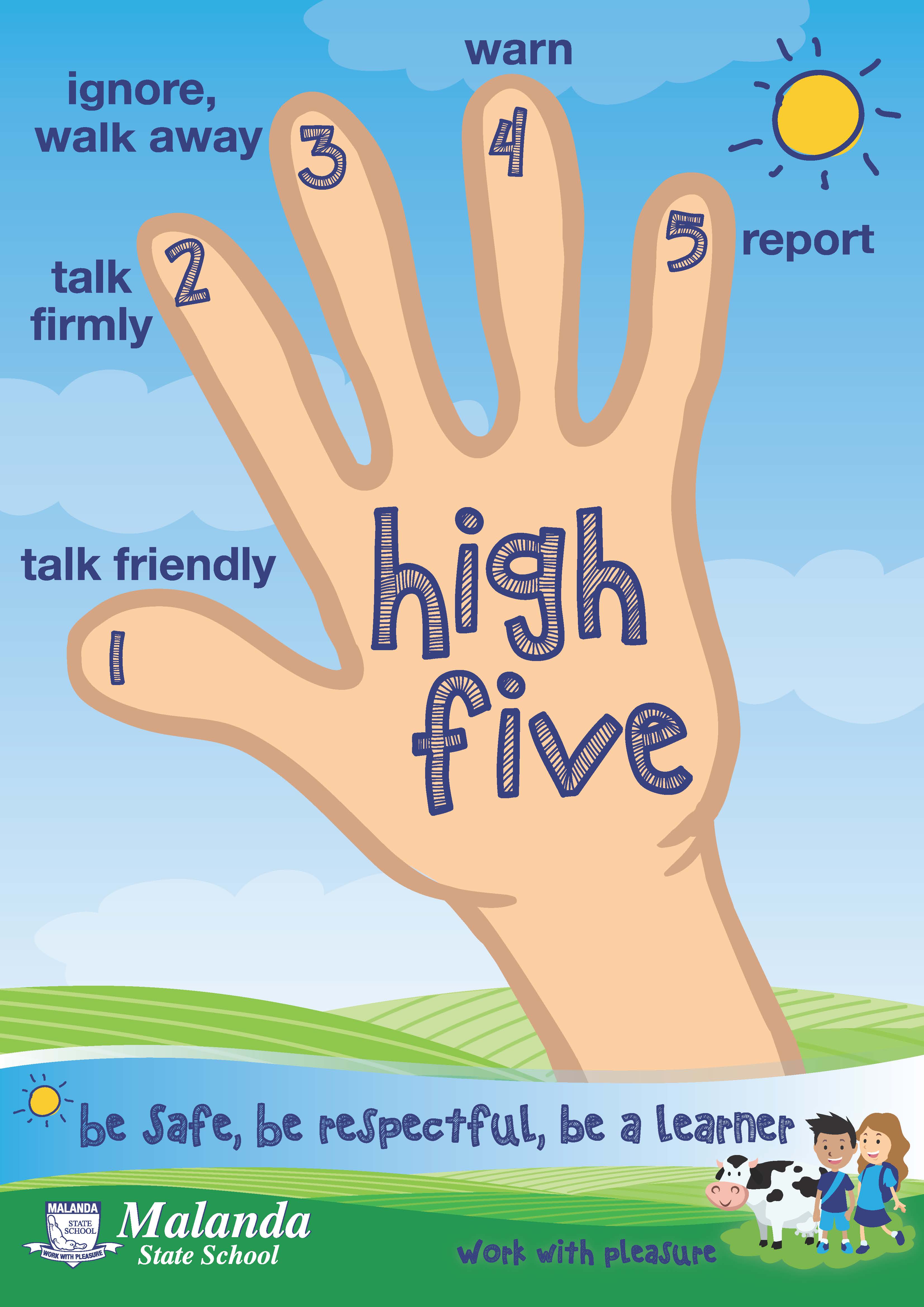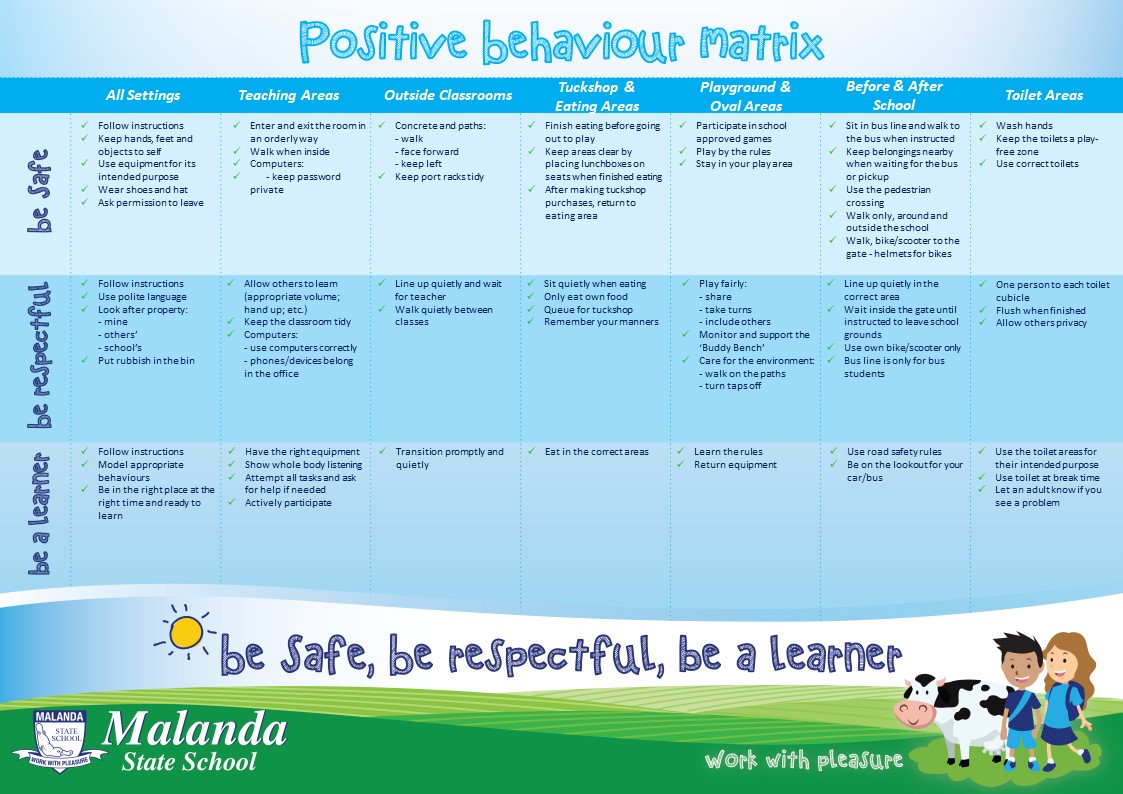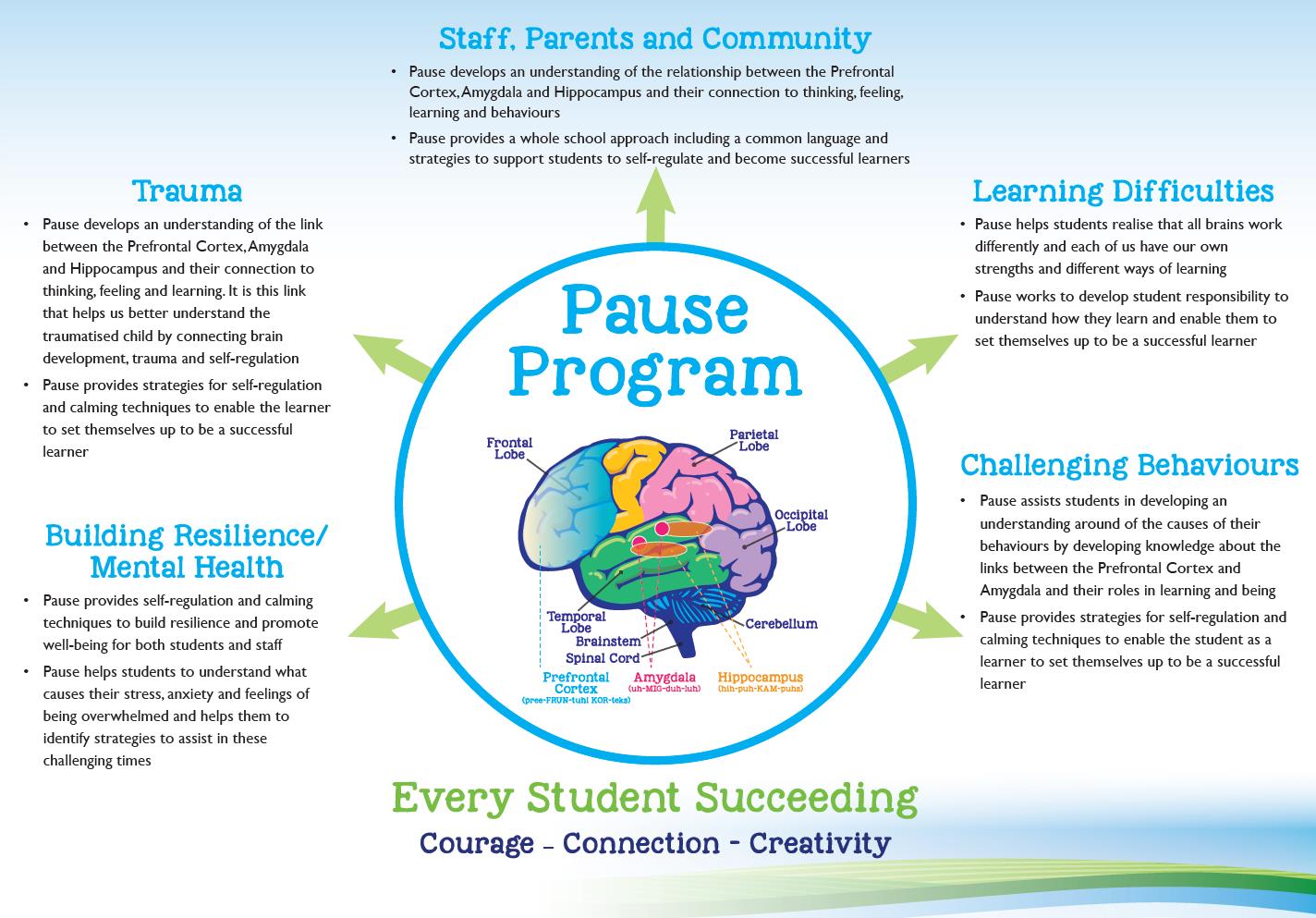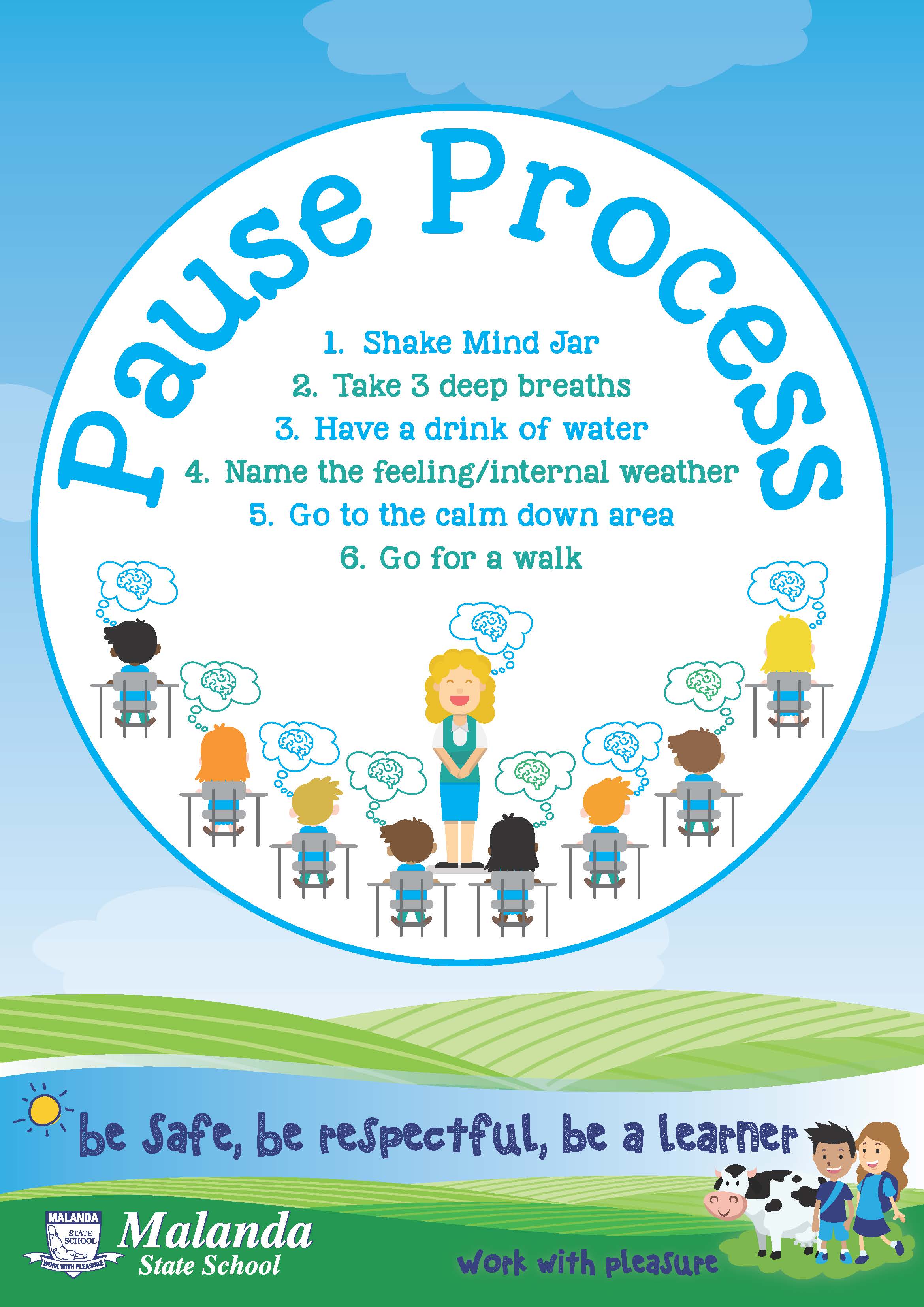Positive Behaviour for Learning (PBL)
Our Positive Behaviour for Learning (PBL) is a system which teaches and promotes positive interactions and behaviour. The system has six main sections:
1. PBL team – meet three times a term and is a representative group composed of teaching staff, teacher aides, and administrators.
2. School expectations – we have three rules; be safe, be respectful and be a learner. Our school rules have been agreed upon and endorsed by our staff and school P&C.
3. Teaching expected behaviours – Our weekly foci (PBL or Pause) are explicitly taught in all classrooms at an allocated time each week with the skills also referred to on parade and promoted on the school Facebook page. This is essential to ensure all students understand and demonstrate the appropriate behaviour each day. Each lesson is developed in line with the explicit teaching model - I Do, We Do and You Do phase descriptions and supported with a poster and powerpoint.
4. Positive acknowledgement – the most effective way to change/acknowledge appropriate behaviour is to provide immediate positive feedback. Our Positive Acknowledgement System includes Class Success Trackers, Moolah, 'Be Cool, Be at School' Attendance, Star Student Awards, Positive Postcards and Rewards Days.
5. Discouraging inappropriate behaviour – we respond to behaviour by following our 'Student Code of Conduct (PDF, 15.9MB)'.
6. Use of data – staff record both positive and negative behaviour incidents on the state-wide OneSchool recording platform. We use the data to look at what is working well and what needs improvement within the PBL system. It also allows us to make decisions and design interventions that are relevant and appropriate.


Bullying Definition
Bullying is repeated (INTENTIONAL) verbal, physical, social or psychological behaviour that is harmful and involves the misuse of power by an individual or group towards one or more persons.
It can have long-term effects on those involved. Bullying can happen:
- Face to face (e.g. pushing, tripping, name-calling)
- At a distance (e.g. spreading rumours, excluding someone)
- Through information and communication technologies (for example, the use of SMS, email, social media or chat rooms)
Some conflicts between children are a normal part of growing up and are to be expected. These conflicts or fights between equals and single incidents are not considered bullying, even though they may be upsetting and need to be resolved.
Identifying bullying can sometimes be difficult. Bullying is often conducted out of sight of teachers and children may be reluctant to report bullying.
If you believe that your child is involved in bullying, please see your class teacher.
Student Code of Conduct
For information on behaviour at Malanda State School, please view our Student Code of Conduct (PDF, 15.9MB).

PAUSE
The Pause program teaches the students the skills to emotionally self-regulate their own behaviour as well as gain the knowledge of the neuroscience of the brain, specifically the three key parts of the brain (Prefrontal Cortex, Amygdala and Hippocampus).
Watch the clip for more information: https://youtu.be/UAapyw1RRXg

